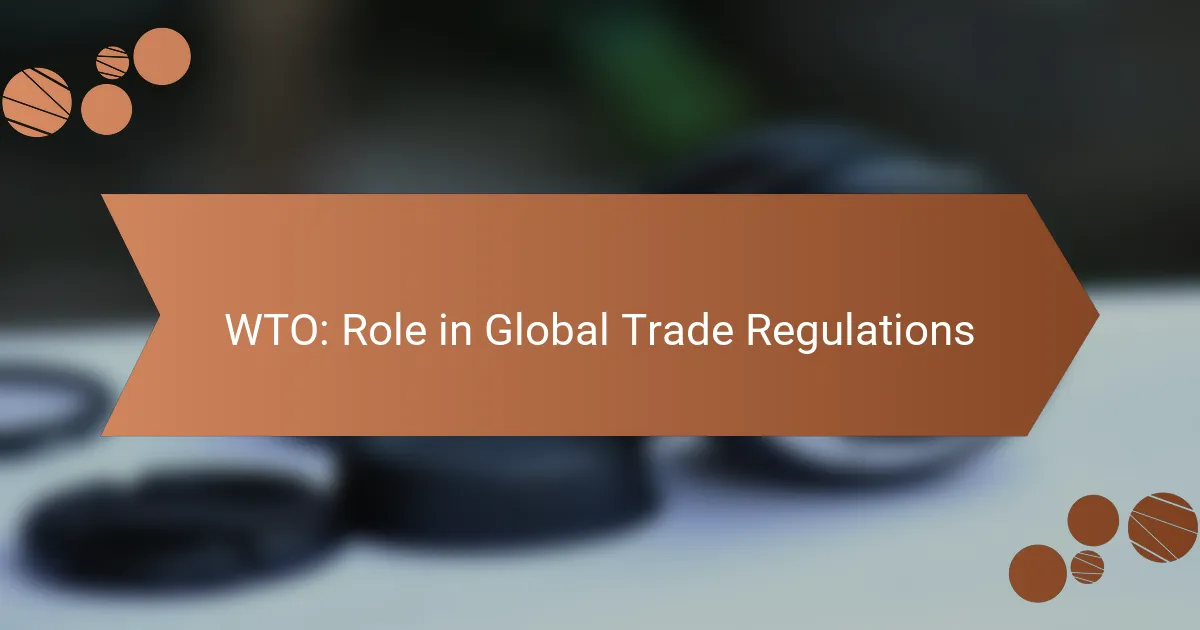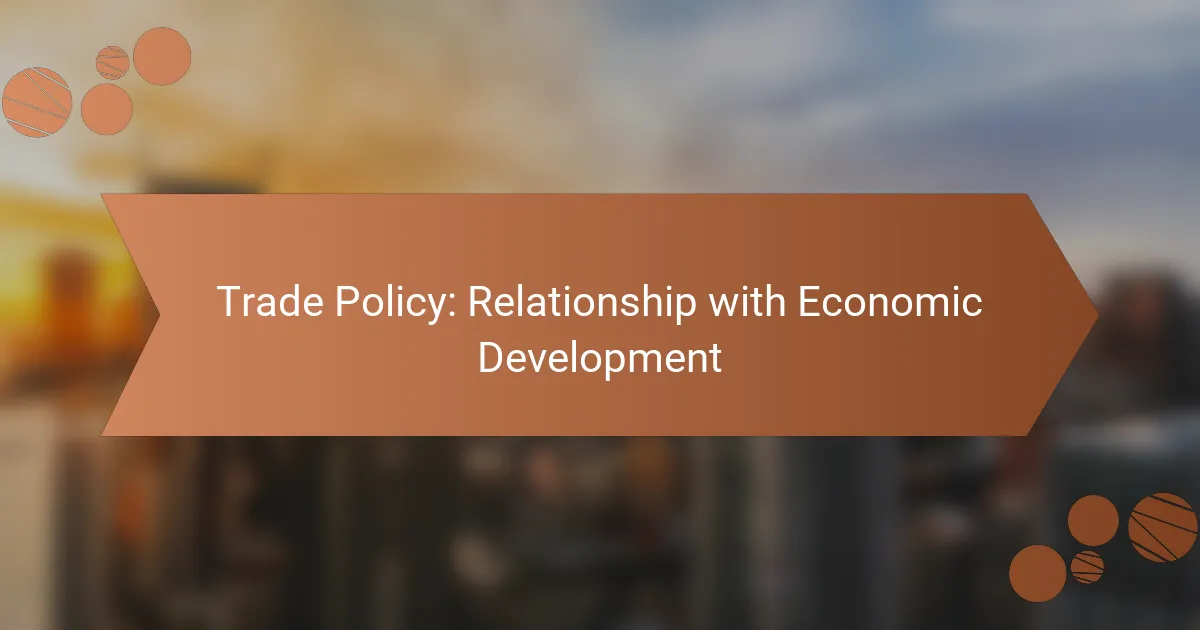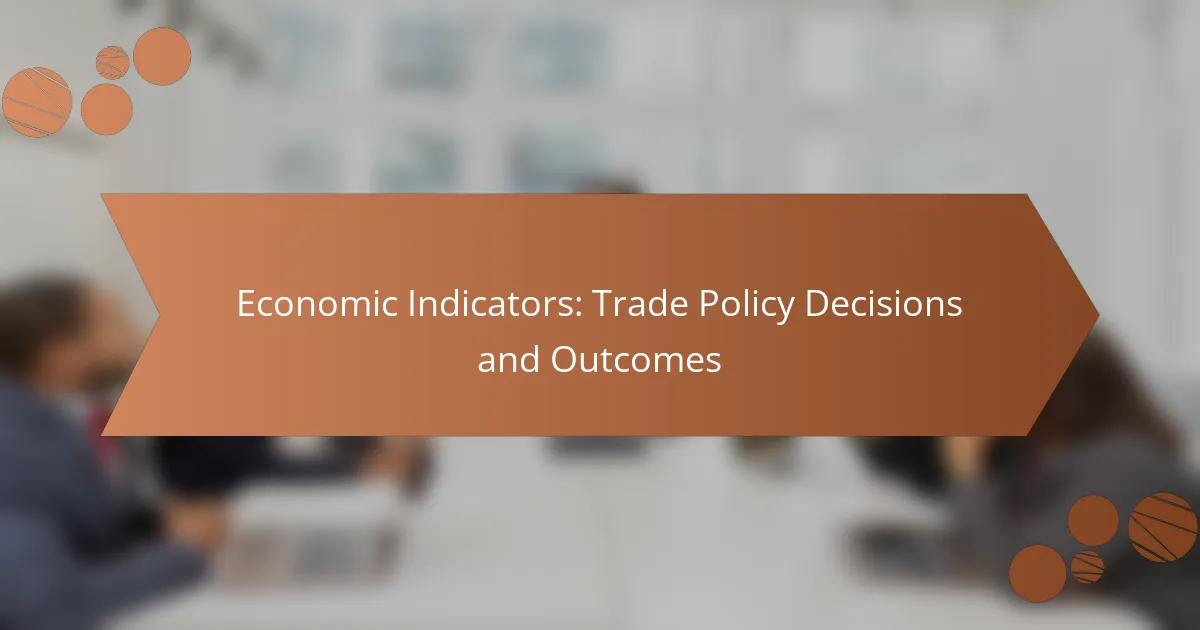The World Trade Organization (WTO) plays a pivotal role in regulating global trade by creating a framework of rules and agreements that member countries adhere to, ensuring smooth and predictable trade flows. By facilitating negotiations, monitoring trade policies, and providing technical assistance, the WTO fosters a stable trading environment that promotes economic growth and development worldwide.
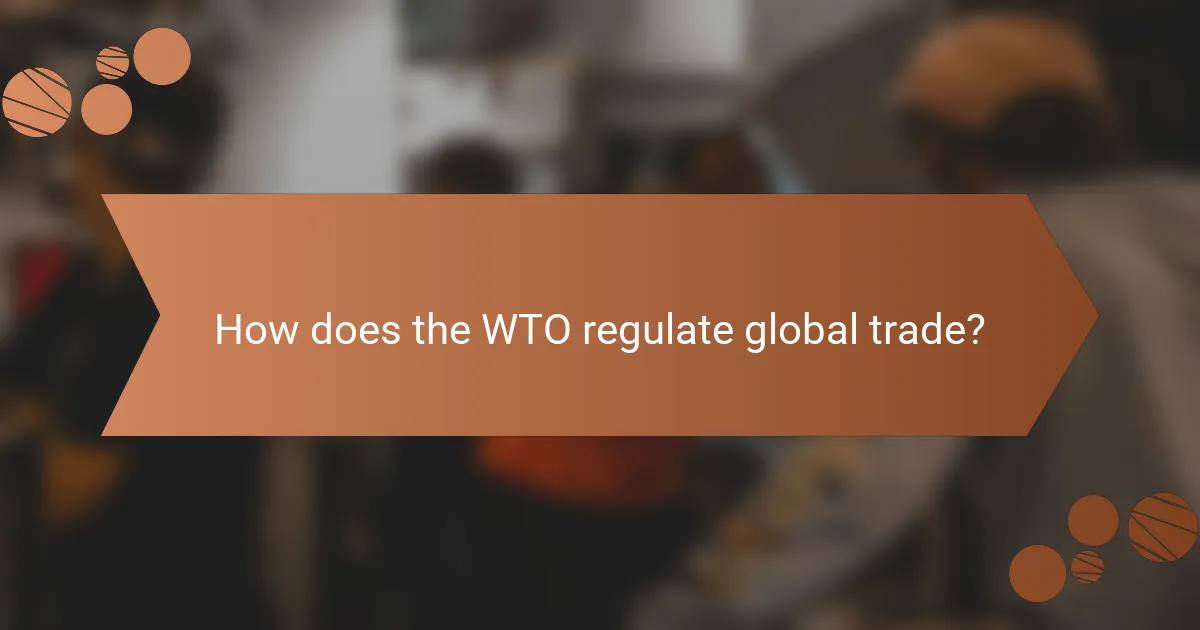
How does the WTO regulate global trade?
The World Trade Organization (WTO) regulates global trade by establishing a framework of rules and agreements that member countries must follow. This ensures that trade flows as smoothly, predictably, and freely as possible, promoting fair competition and reducing trade barriers.
Trade agreements enforcement
The WTO enforces trade agreements through a system of commitments made by its member countries. These agreements cover various aspects of trade, including goods, services, and intellectual property, and are designed to create a level playing field.
When countries fail to adhere to these agreements, the WTO can take action, which may include consultations and recommendations for compliance. For example, if a country imposes tariffs that violate its commitments, the WTO can facilitate negotiations to resolve the issue.
Dispute resolution mechanisms
The WTO has a structured dispute resolution process to address conflicts between member nations regarding trade agreements. This process involves consultations, panel reviews, and the possibility of appeals, ensuring that disputes are settled fairly and efficiently.
Countries can bring disputes to the WTO if they believe another member is violating trade rules. The resolution process typically takes several months, and the WTO’s rulings are binding, which helps maintain order in international trade.
Tariff and non-tariff barriers management
The WTO manages tariff and non-tariff barriers by encouraging transparency and negotiation among member countries. Tariffs are taxes imposed on imported goods, while non-tariff barriers can include quotas, import licenses, and standards that restrict trade.
Members are required to notify the WTO of changes to their tariffs and non-tariff measures, allowing for monitoring and assessment. This helps ensure that trade remains open and competitive, as countries work to reduce unnecessary barriers to trade.
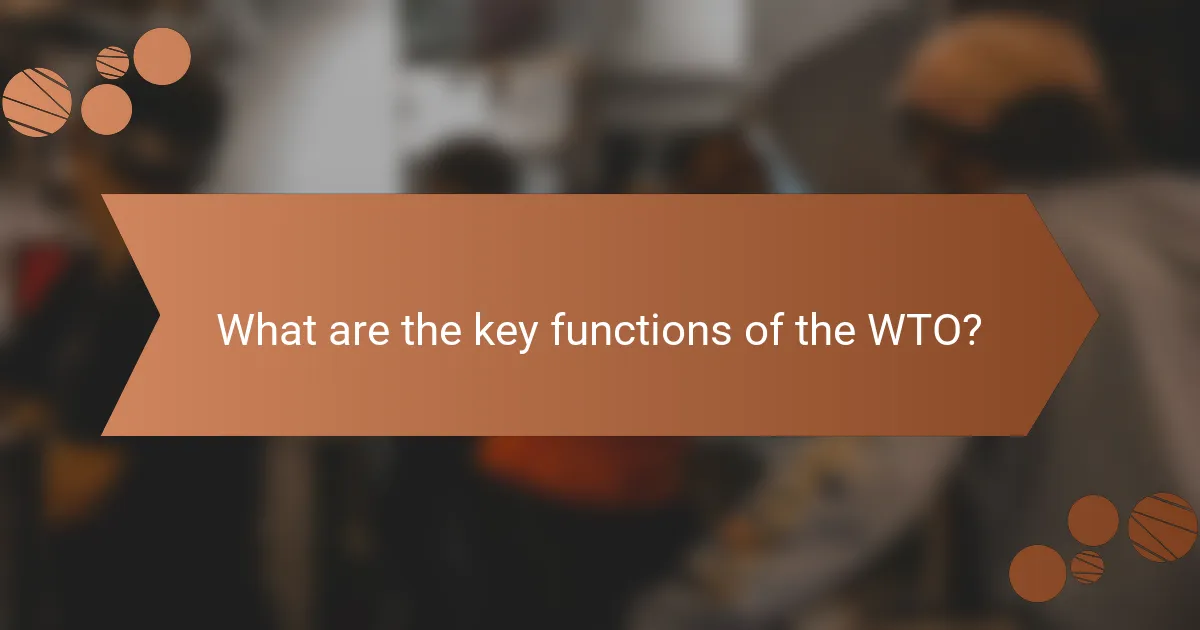
What are the key functions of the WTO?
The World Trade Organization (WTO) plays a crucial role in global trade by facilitating negotiations, monitoring trade policies, and providing technical assistance to member countries. These functions help create a stable and predictable trading environment, fostering economic growth and development worldwide.
Facilitating trade negotiations
The WTO facilitates trade negotiations among its member countries to establish and update trade agreements. These negotiations aim to reduce tariffs, eliminate trade barriers, and promote fair competition. For example, the Doha Round, which began in 2001, focuses on improving trade conditions for developing nations.
During negotiations, member countries discuss various issues, including agricultural subsidies, intellectual property rights, and service trade. The WTO provides a platform for dialogue, helping countries reach consensus and ensuring that all voices are heard.
Monitoring trade policies
The WTO monitors the trade policies of its member countries to ensure compliance with agreed-upon rules and commitments. This monitoring process involves regular reviews and assessments, which help identify potential trade disputes and promote transparency. Countries are required to submit reports detailing their trade practices, which the WTO analyzes.
Through its Trade Policy Review Mechanism (TPRM), the WTO conducts periodic evaluations of member countries’ trade policies. This process encourages adherence to WTO agreements and fosters accountability among nations, ultimately contributing to a fairer trading system.
Providing technical assistance
The WTO offers technical assistance and training to developing countries to help them build capacity and effectively participate in the global trading system. This support includes workshops, seminars, and resources tailored to the specific needs of these nations. By enhancing their understanding of trade rules, developing countries can better navigate international markets.
Additionally, the WTO collaborates with other international organizations to deliver comprehensive support programs. These initiatives often focus on areas such as trade facilitation, export development, and regulatory compliance, ensuring that developing nations can compete more effectively on the global stage.
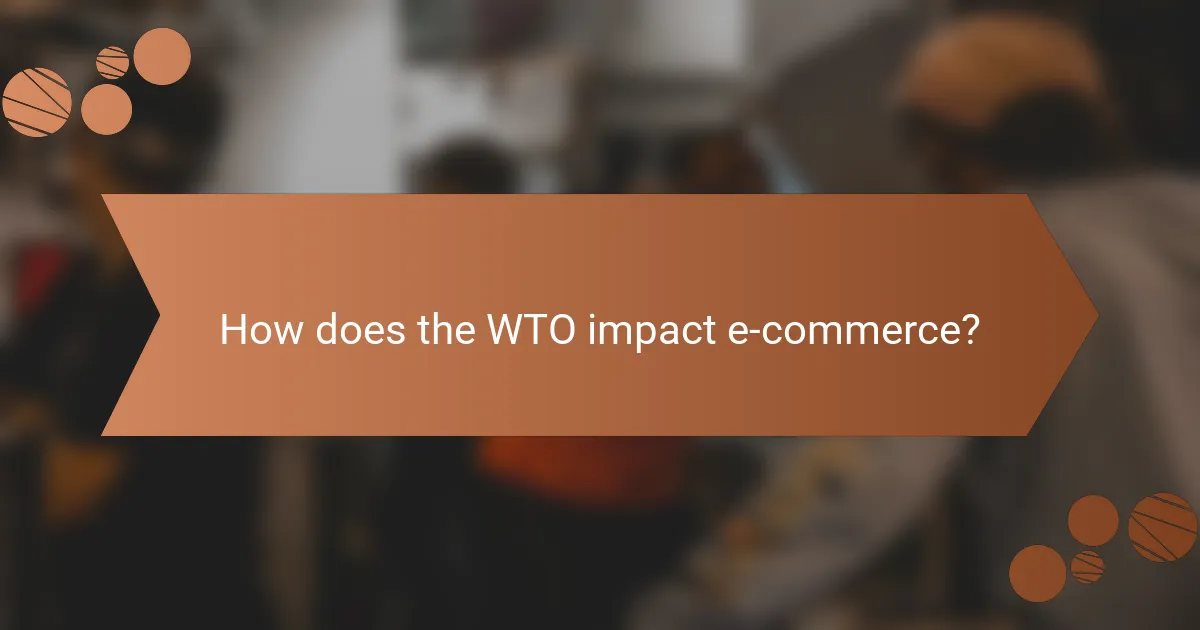
How does the WTO impact e-commerce?
The World Trade Organization (WTO) significantly influences e-commerce by establishing rules that facilitate international digital trade. These regulations aim to create a fair and predictable environment for online businesses, ensuring that trade barriers are minimized and that digital transactions can occur smoothly across borders.
Framework for digital trade
The WTO provides a comprehensive framework for digital trade, which includes guidelines on trade in services and goods conducted online. This framework helps member countries align their national regulations with international standards, promoting consistency and reducing uncertainty for businesses engaging in e-commerce.
For example, the General Agreement on Trade in Services (GATS) covers various aspects of online services, ensuring that countries do not impose discriminatory measures against foreign service providers. This encourages competition and innovation in the digital marketplace.
Cross-border data flow regulations
Cross-border data flows are essential for e-commerce, and the WTO plays a crucial role in regulating these movements. The organization advocates for policies that prevent unjustified restrictions on data transfer, which can hinder international trade.
Member countries are encouraged to adopt transparent and non-discriminatory data flow regulations. For instance, some nations have implemented frameworks that allow data to move freely while ensuring adequate protection for personal information, balancing trade facilitation with privacy concerns.
Intellectual property protection
Intellectual property (IP) protection is vital for fostering innovation in e-commerce, and the WTO oversees agreements that safeguard these rights globally. The Trade-Related Aspects of Intellectual Property Rights (TRIPS) agreement sets minimum standards for IP protection, which member countries must adhere to.
Effective IP protection encourages businesses to invest in new technologies and creative content, knowing their innovations will be legally protected. Companies engaged in e-commerce should be aware of these regulations to ensure compliance and to protect their own intellectual assets when operating internationally.
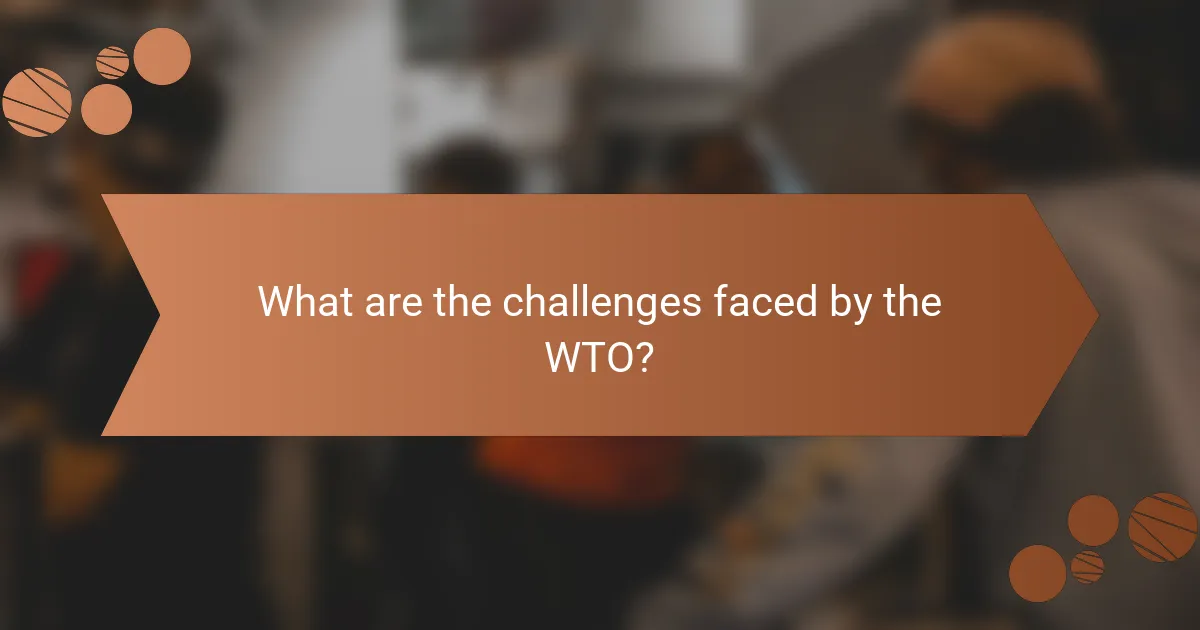
What are the challenges faced by the WTO?
The World Trade Organization (WTO) faces several significant challenges that impact its effectiveness in regulating global trade. These challenges include member compliance issues, global economic disparities, and resistance to necessary reforms.
Member compliance issues
Member compliance issues arise when countries do not adhere to WTO agreements or fail to implement trade rules effectively. This can lead to disputes and undermine the credibility of the organization. For instance, some nations may prioritize domestic interests over international obligations, creating an uneven playing field.
To address compliance, the WTO has established a dispute resolution mechanism, but its effectiveness can be hampered by lengthy processes and political considerations. Countries must be encouraged to engage in good faith negotiations and uphold their commitments to foster a fair trading environment.
Global economic disparities
Global economic disparities pose a challenge to the WTO’s mission of promoting free trade. Wealthier nations often have more resources to navigate trade regulations and benefit from trade agreements, while developing countries may struggle to compete. This imbalance can lead to calls for preferential treatment or special provisions for less developed nations.
To mitigate these disparities, the WTO has initiatives aimed at providing technical assistance and capacity building for developing countries. However, the effectiveness of these programs varies, and ongoing support is crucial for leveling the playing field in international trade.
Resistance to reforms
Resistance to reforms within the WTO can hinder its ability to adapt to changing global trade dynamics. Some member countries may oppose changes that could affect their economic interests or sovereignty. This resistance often manifests during negotiations on issues like agricultural subsidies or intellectual property rights.
To overcome this challenge, the WTO must foster dialogue among members and emphasize the long-term benefits of reforms. Building consensus is essential for ensuring that the organization remains relevant and effective in addressing contemporary trade issues.
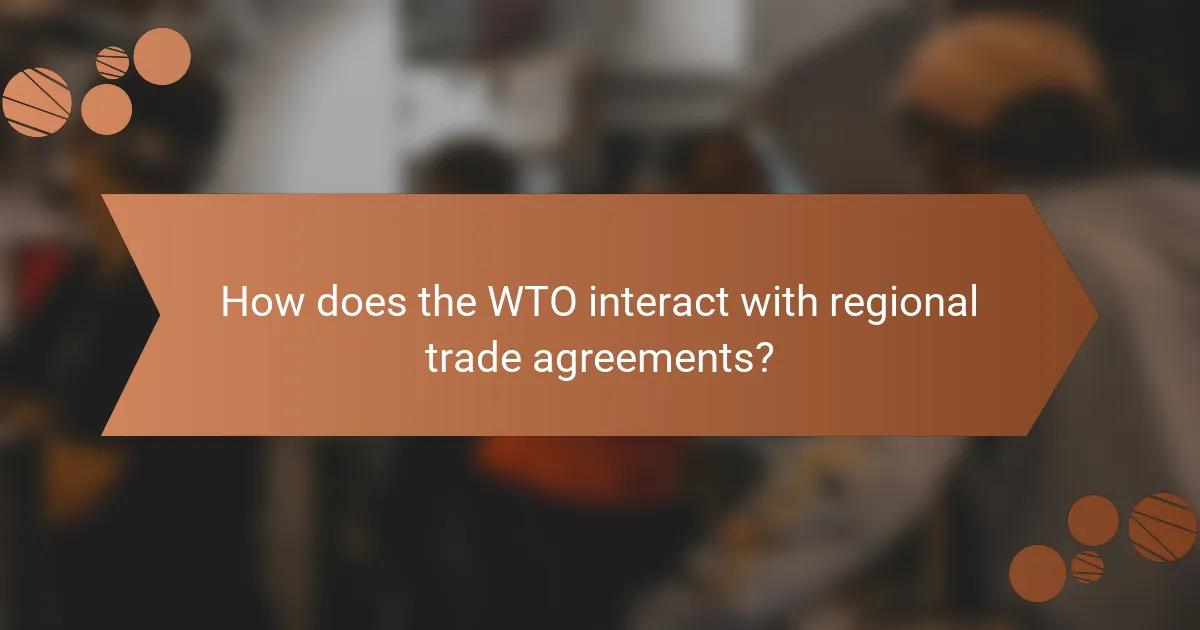
How does the WTO interact with regional trade agreements?
The World Trade Organization (WTO) interacts with regional trade agreements (RTAs) by providing a framework that encourages cooperation while ensuring that these agreements align with global trade rules. This interaction helps to maintain a balance between regional integration and the broader goals of multilateral trade liberalization.
Complementary roles
The WTO and regional trade agreements often serve complementary roles in promoting trade. RTAs can facilitate faster trade liberalization among member countries, while the WTO establishes a comprehensive set of rules that govern international trade. For example, countries in a regional agreement may eliminate tariffs among themselves, but still adhere to WTO rules regarding non-discrimination and transparency.
This synergy allows countries to tailor their trade policies to regional needs while still contributing to global trade stability. The WTO encourages members to notify their RTAs, ensuring that these agreements are transparent and consistent with global trade commitments.
Overlap and conflicts
While the WTO and regional trade agreements can complement each other, conflicts may arise when regional rules diverge from WTO regulations. For instance, preferential treatment in RTAs may lead to trade diversion, which can undermine the principles of most-favored-nation treatment upheld by the WTO. This can create tensions between regional and global trade frameworks.
Countries must navigate these overlaps carefully to avoid disputes. It is crucial for nations to ensure that their regional agreements do not violate their WTO obligations, as this can lead to legal challenges and trade tensions.
Case studies of regional agreements
Several regional trade agreements illustrate the interaction with the WTO. The North American Free Trade Agreement (NAFTA), now replaced by the United States-Mexico-Canada Agreement (USMCA), showcases how regional cooperation can enhance trade while still adhering to WTO rules. NAFTA allowed for tariff reductions among member countries while maintaining compliance with WTO obligations.
Another example is the European Union (EU), which has developed a complex internal market that operates under its own set of rules. The EU’s trade policies often align with WTO principles, but its unique regulations can sometimes create challenges for non-member countries seeking access to the EU market.
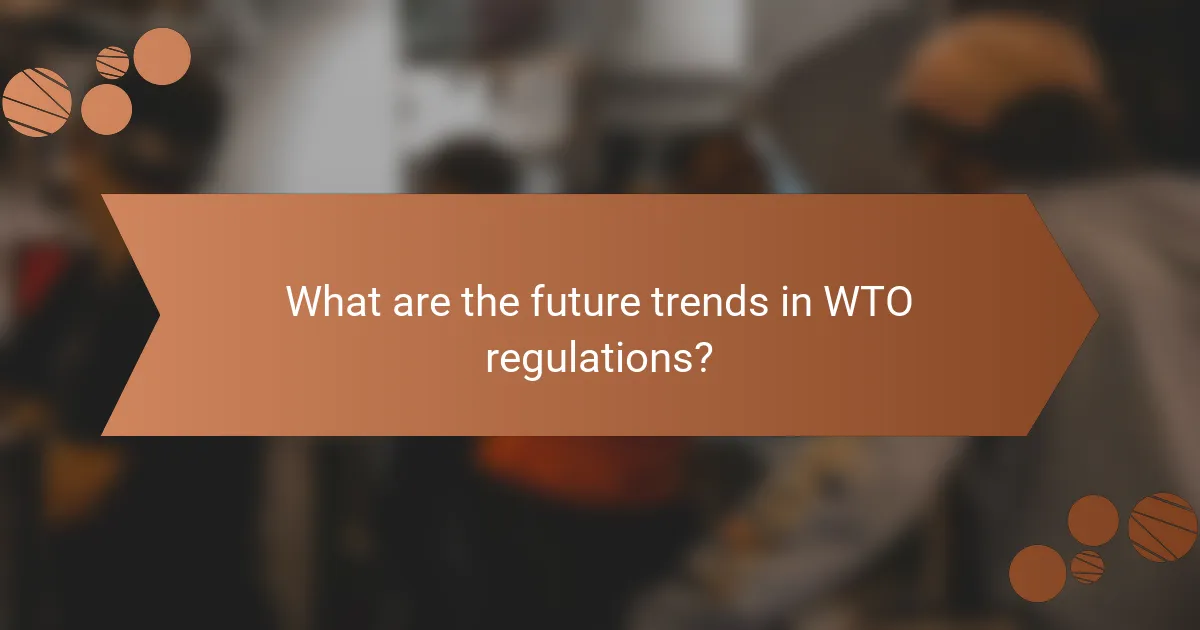
What are the future trends in WTO regulations?
The future trends in WTO regulations are increasingly focused on digital trade and environmental sustainability. As global commerce evolves, the WTO is adapting its frameworks to address new challenges and opportunities in these areas.
Digital trade evolution
The evolution of digital trade is reshaping global commerce, with the WTO aiming to establish guidelines that facilitate cross-border e-commerce. This includes addressing issues like data flows, privacy, and cybersecurity, which are critical for businesses operating online.
Countries are encouraged to adopt policies that support digital trade while ensuring consumer protection and fair competition. For instance, simplifying customs procedures for digital goods can enhance trade efficiency and reduce costs for businesses and consumers alike.
Environmental sustainability initiatives
Environmental sustainability is becoming a priority in WTO regulations as nations recognize the need for greener trade practices. The WTO is exploring frameworks that promote sustainable development, such as encouraging the trade of environmentally friendly products and services.
Member countries are urged to integrate sustainability into their trade policies, which may involve setting standards for sustainable sourcing and reducing carbon footprints. For example, initiatives could include tariffs or incentives for goods that meet specific environmental criteria, fostering a more sustainable global marketplace.
